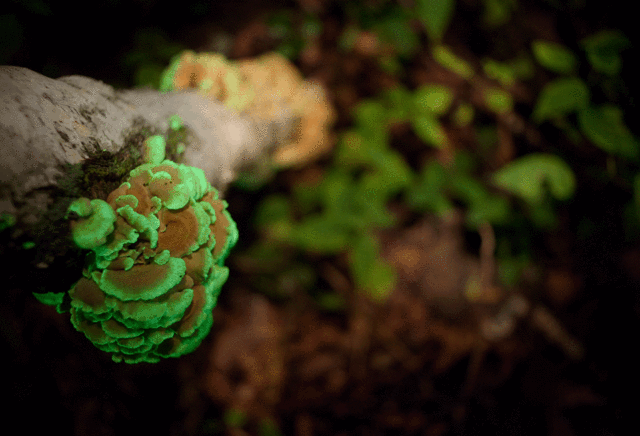Hi everyone, and welcome back to the Mirror Gallery. This week I’m going to get a little nostalgic, all the way back to 2008 when Magic visited a new world—one with residents that were in for a quite a surprise. The painting I’m sharing today is from Shadowmoor, one of my very favorite sets, by a legendary and longtime Magic artist. I’m very excited to show you and talk about Dave Kendall’s Foxfire Oak:
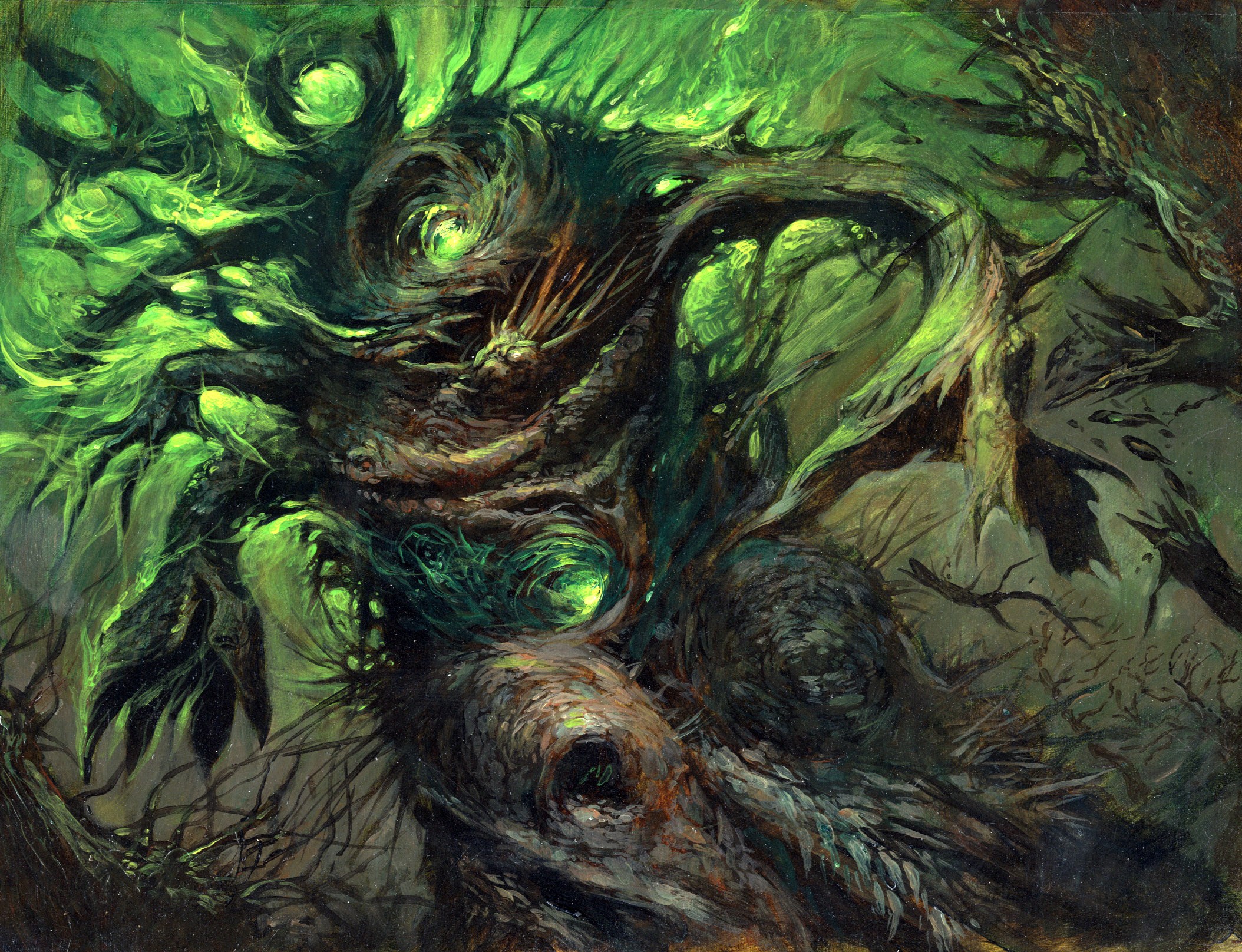
It won’t hurt my feelings if you don’t recognize this art at first; the card was mostly unplayable across all formats, and hasn’t seen a reprint since its initial printing in 2008 ten years ago. But as far as I’m concerned, it’s a diamond in the rough when it comes to Magic illustration, narrative storytelling, and the interpretive power of art. I’ll even go as far to say this work is able to tell the entire story of Shadowmoor as good as or better than any other illustration from the block. Today we’ll dive deep into what this tree has to say, look at some real world connections, and get museum-level interpretive. It’s going to be a journey, but I promise it will be worth it. Before we go back to The Great Aurora, let’s meet the artist behind this painting.
The Artist

Dave Kendall has created 144 different illustrations for Magic since he began with the game in 2006, and his oeuvre (or body of work) is one that is immediately recognizable within the card frame. He has painted across all colors and card types, from the macabre to the surreal and everything in between both real and fantastic. Some of my favorites are below, and you can find all of his Magic cards here on Scryfall.
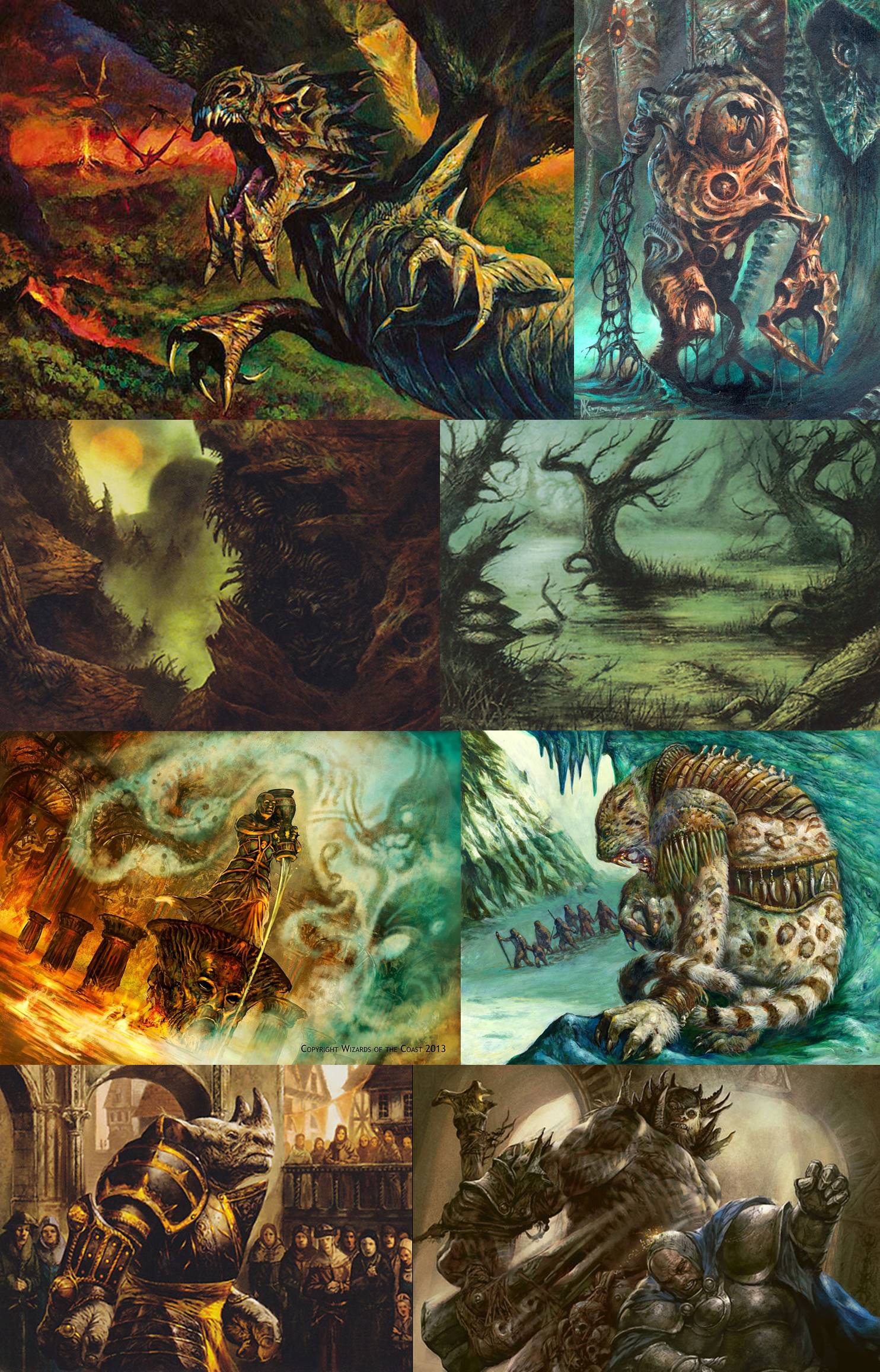
His illustrations are found on a staggering sixteen promotional cards, from Friday Night Magic to Wizards Play Network to MTGO and including a Judge Promo. His artwork is especially exciting in foil, and this snapshot again shows the wide variety of scenes, creatures and spells, across the entire color palette, that Kendall executes in his work.
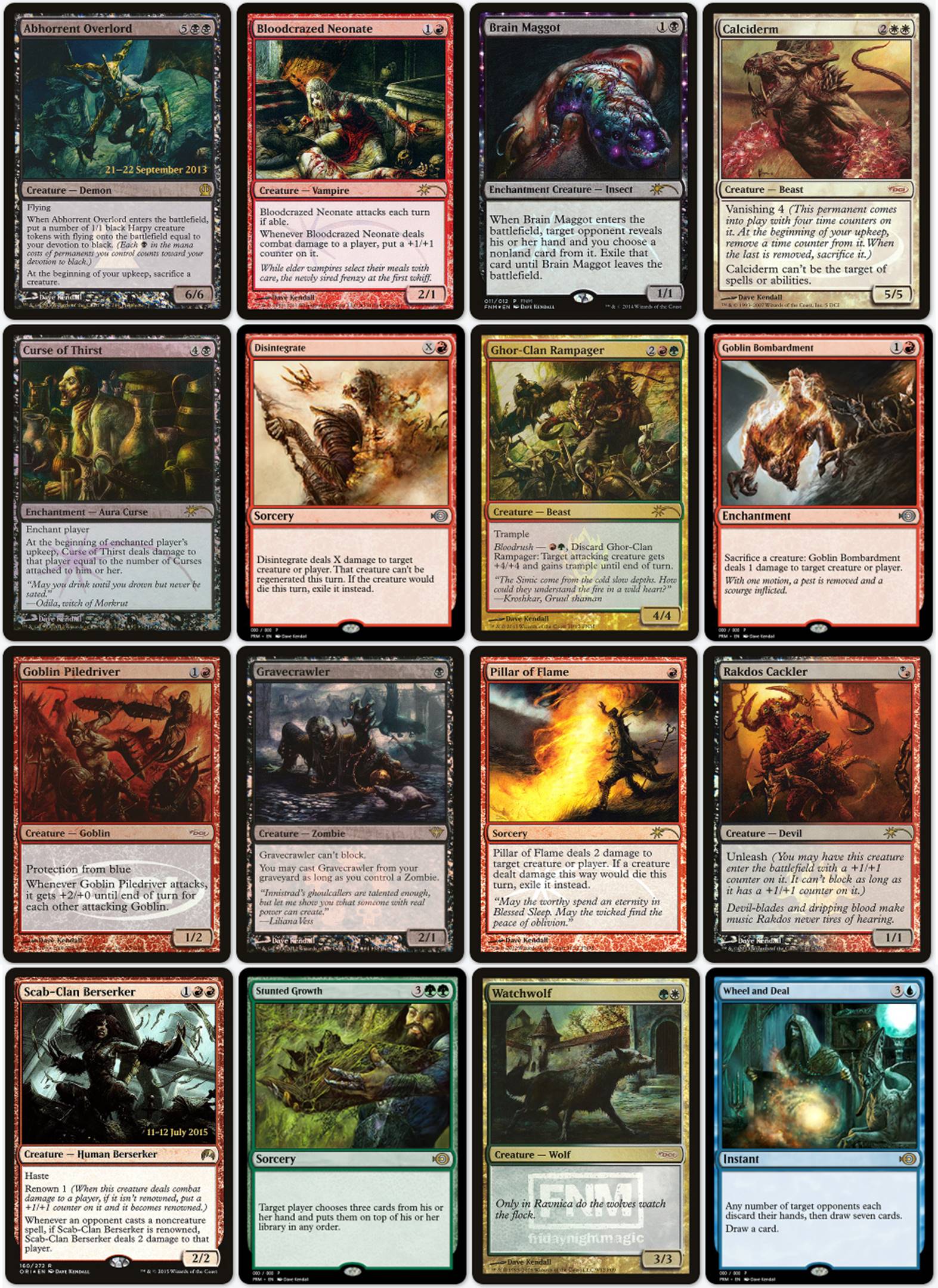
In addition to Magic, Dave has a storied career within the comic industry, beginning his work with Pat Mills of 2000AD and recently returning as co-creator and illustrator of the Deadworld storyline for the series. He has worked for a number of other games and comics including World of Warcraft, Necroscape, and Houses of the Holy, as well as creating other unaffiliated and personal pieces that are just exceptional, like ‘Lambton Wurm’ below:
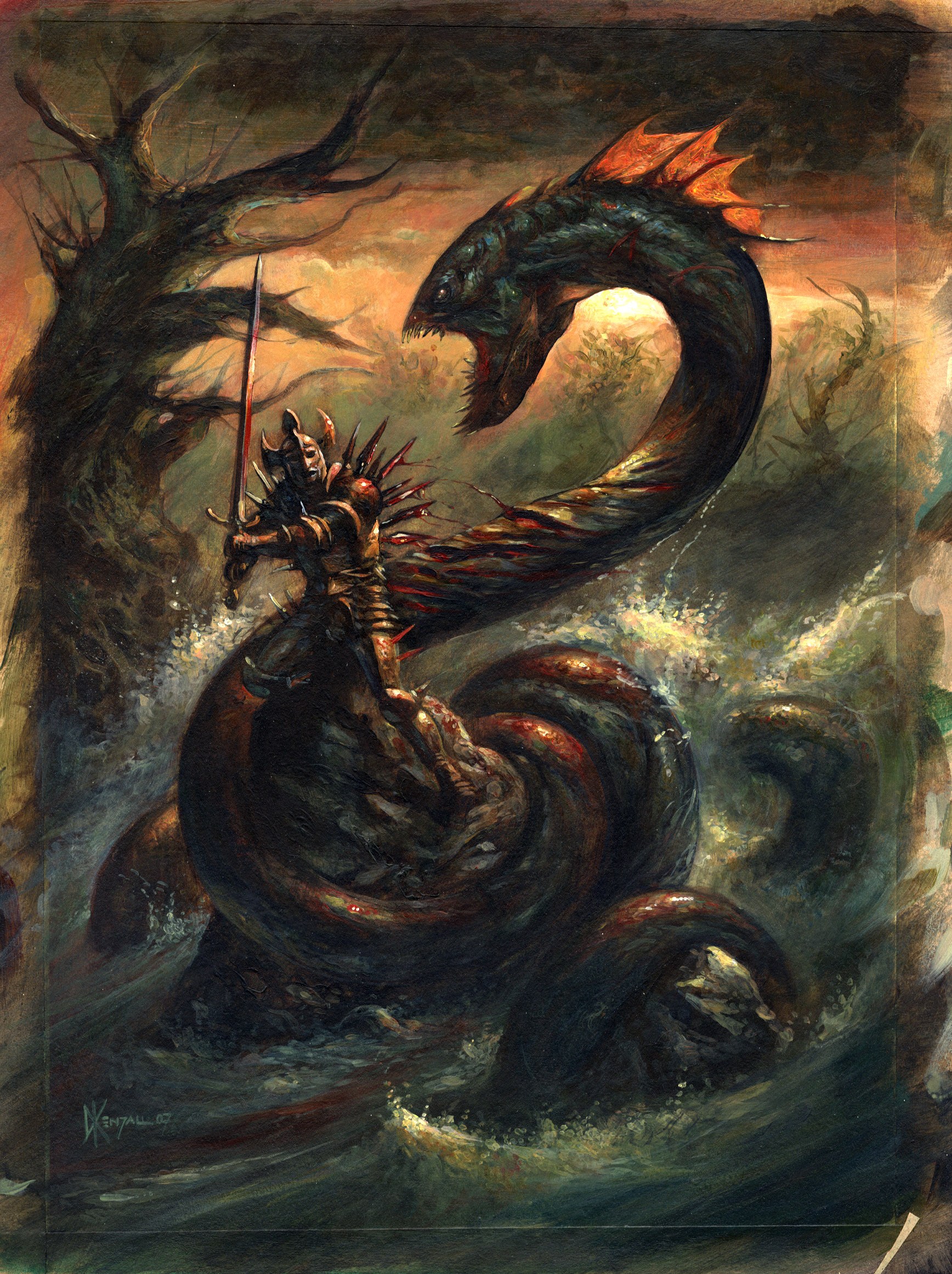
Lambton Wurm by Dave Kendall. Original Available.
You can check out his personal website here and read his bio on his agent’s site (where his remaining originals can be found) here.
I was able to talk with Dave as I was writing, and he shared some of his early inspiration and prelims for this art. I found out that he used his own reference photos of Crack Willows on the Somerset Levels near his home below Glastonbury Tor in England, and he was even able to trace through his 30-odd sketchbooks to find the earliest depictions of Foxfire Oak! If you’re extra curious, do a Google search for “cracked willows” or “pollarded willows” and you can really see some of the natural components that were incorporated into this work.
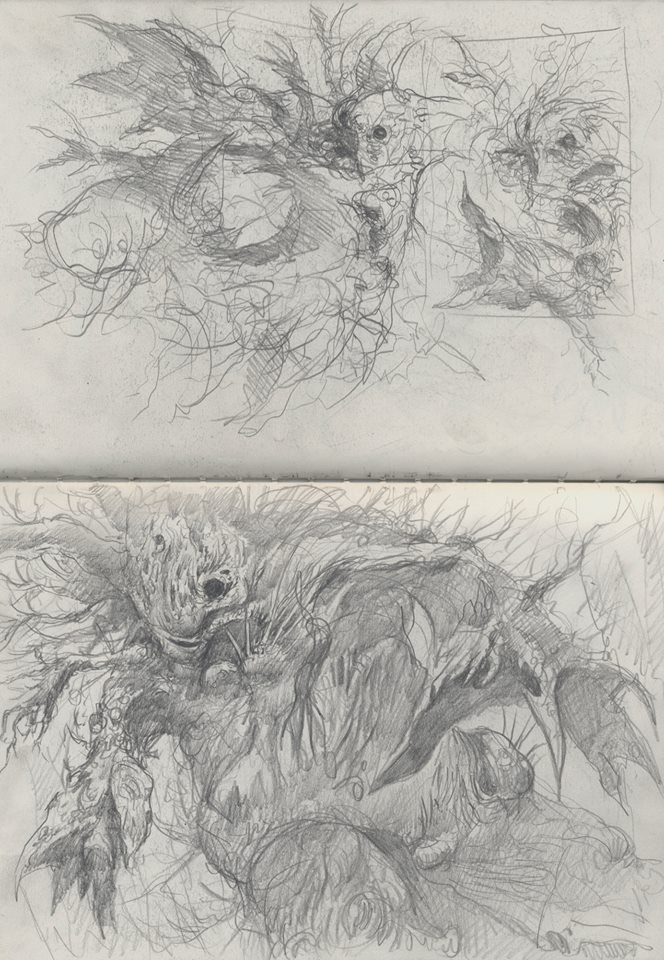
Foxfire Oak: Narrative Storytelling in Art
Foxfire Oak, although an illustration many new players won’t recognize and a card many enfranchised players won’t remember, is the embodiment of the Lorwyn-Shadowmoor storyline wrapped up neatly into one work of art. It’s also one of the best examples of real-world influence on world-building, and the narrative created from the marriage of the two is wonderfully exciting.
Foxfire Oak was printed only as a common card, but commons are where the story and world setting can be exposed to the most players. This tree does an exceptional job of both, narrating the Magic story and blending real-world facets into a fantasy world. Let’s take a closer look at the different elements drawn into Foxfire Oak:
The Great Aurora
On Lorwyn, events called the “Aurora” take place every year, where lights can be seen in the night sky. This is not unlike the auroras found here on Earth, where one can also see lights in the night sky best and most often at the Artic poles and other areas of high latitude.
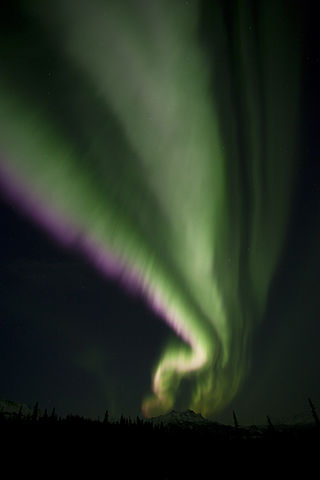
By Denali National Park and Preserve – Aurora Borealis Over Mount Fellows, Uploaded by Albert Herring, Public Domain
But on Lorwyn there are greater phenomena, and these are called “The Great Aurora.” According to lorekeeper Jay Annelli, approximately every 300 years day turns to night and light to darkness, transforming the plane into Shadowmoor and twisting its populous for extended periods of time. During these events Lorwyn loses itself entirely. Its residents forget their old selves, becoming everything from unsettled to resentful to paranoid, and in some cases bordering insanity. Rei Nakazawa’s 2008 article “The Deepening Shadowmoor” describes these tribal metamorphoses in detail, and today, we focus on the Treefolk.
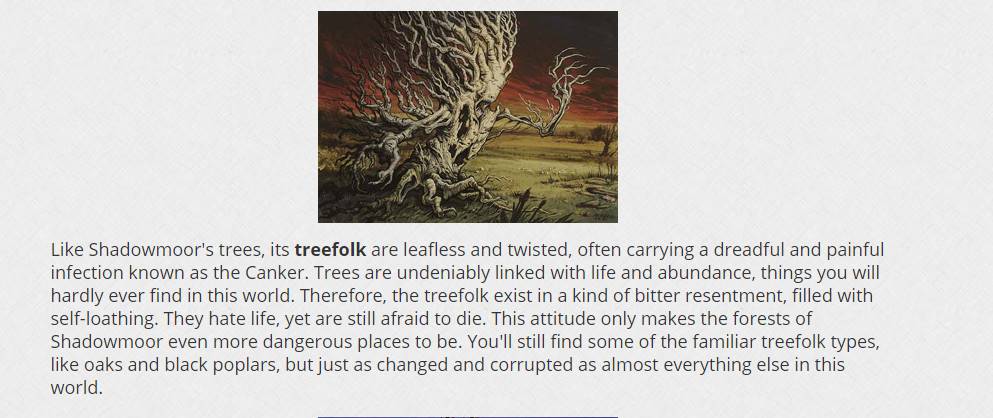
Sick, infected, self-loathing, and corrupt, and Foxfire Oak is no different as seen it in its twisted boughs and aggressive stance. The trees of Shadowmoor are angry at the world, the root cause being this Great Aurora.
Foxfire
The art we are looking at is entitled ‘Foxfire Oak,’ and if we return briefly to Earth we find that foxfire exists here too.
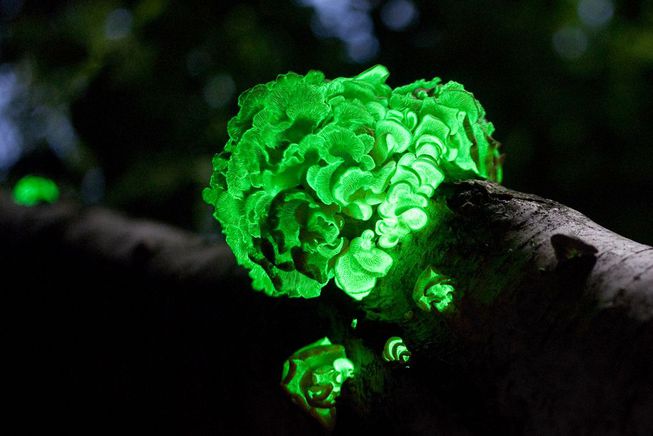
Foxfire is the term for the bioluminescence that emanates from fungus present in decaying wood, and it produces an eerie glow that can be seen in the forest after nightfall. To further connect us to our first point, the Finnish word for the Aurora Borealis, the specific real-world aurora also known as the Northern Lights, is revontulet, or literally “foxfires.”
So foxfire can only exist in wood if it’s decaying and ridden with fungus. And it can only be seen at night. Only on Shadowmoor is it night all the time, and the trees turned cankerous and rotting. The presence of foxfire seats this work firmly on Shadowmoor and highlights the effect the Great Aurora has had on the plane.
Flavor & Bringing it All Together
“The brethren shall blaze with unnatural fire, and the flame shall consume and purify our rage.” —Treefolk catastrophe myth
The flavor text above is what appears at the bottom of Foxfire Oak, and provides the perfect context, the proverbial ‘cherry on top’ to bring our story together. The idea that the trees, angry as they are on Shadowmoor, blaze with a raging fire that on Earth is seen as mystical and surreal, is a brilliant execution of world-building and narrative storytelling.
We’ve found our Shadowmoor tree, blighted and decaying in its new world, burning with a mysterious flame during perpetual nightfall. What comes from rotting wood, only visible at night, and is also a beautiful and vicious representation of the tree folk’s new lease on life? Foxfire.
The idea that this snapshot in our fantasy timeline is inspired by real things made fantastic and naming parallels that align with the very events that cause the transformation is top-tier exciting for a Vorthos. For me, this level of storytelling and subtle real world to fantasy connection will always be one of the most exciting parts of Magic art.
Why This Piece?
The Work
This is a stunning work of art, from the neon glow of the foxfire acrylic to the life and motion given to the oak as it rampages through the forest. As you’ve seen it’s an absolute experience to view this painting, and the storytelling derived from the brushstrokes is hard to match.
The Artist
Dave Kendall’s style is so unique, especially to Magic, and I love being able to own a piece by someone with such a profound career in art and illustration. This piece was the perfect fit for my collection from this artist, and I’m glad I was able to acquire it directly after watching it from the sidelines for so long.
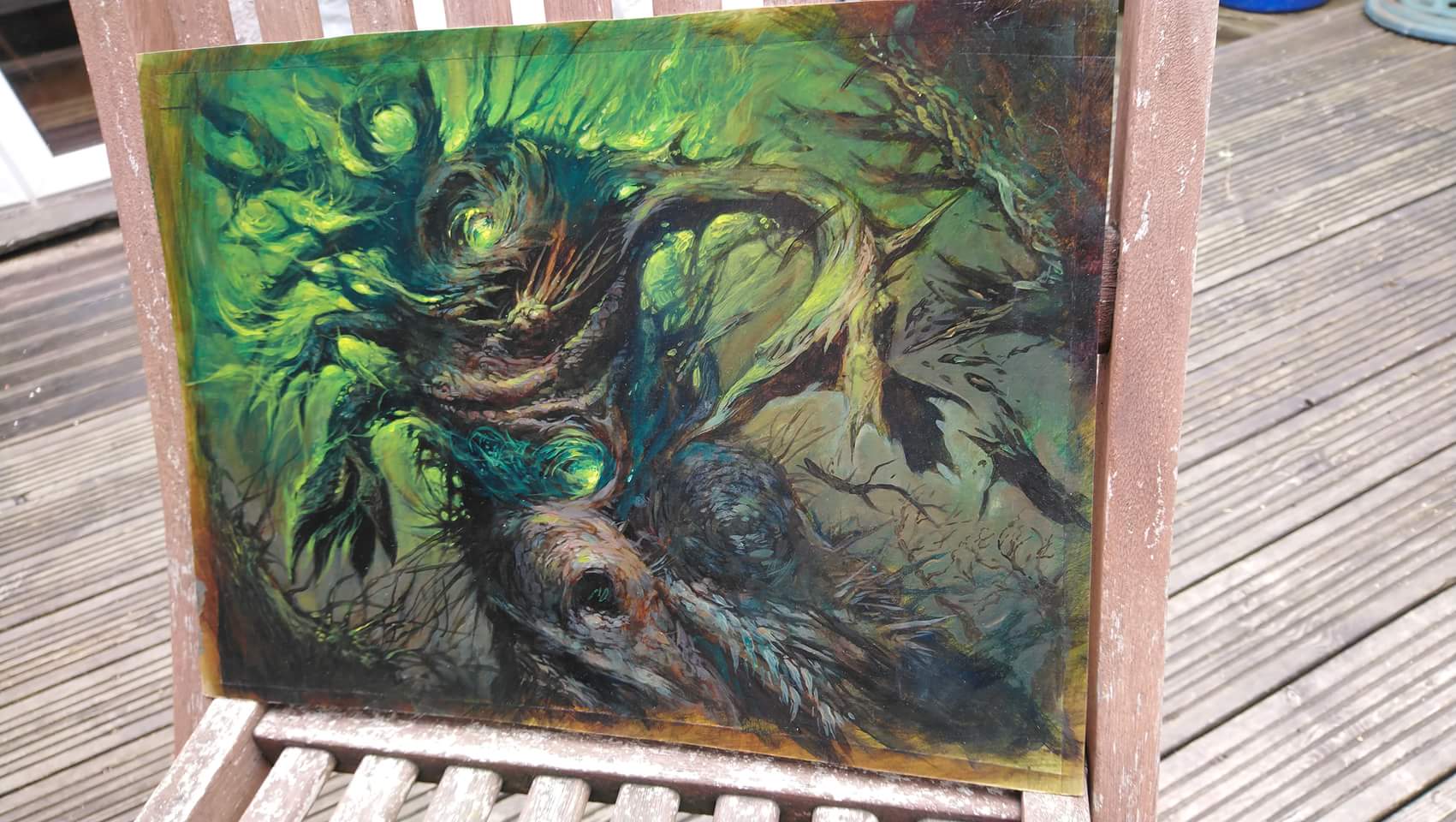
The image sent to me prior to buying, so I could see the real work in natural light.
The Environment
I have distant but very fond memories of this block, having played Lorwyn in my undergraduate dorm room and winning a Shadowmoor prerelease on campus. I said earlier that Shadowmoor remains one of my all-time favorite Magic sets, and the fact that this work is so representative of that world and story makes it incredibly special to me as an art collector.
Put it on the Wall!
The array of colors and fluid motion of this treefolk made framing this piece no easy task. It’s been a while, but I headed back to see my friends Lou and Andrew at Ain’t That a Frame in Westminster, MD. Arriving early on a Saturday, the store was exceptionally busy. A rainy summer and fall have left people unable to take their art in and out of the weather, but I don’t mind waiting because it gives me an opportunity to look through the “Ready-Mades.”
If you remember, these are frames made from the leftover sections of other custom framing jobs with whatever wasn’t used on that project. They are an assortment of styles and sizes, and the randomness of this approach provides an extra dose of serendipity once the right frame is found. In the back pile on the back shelf, I found this:
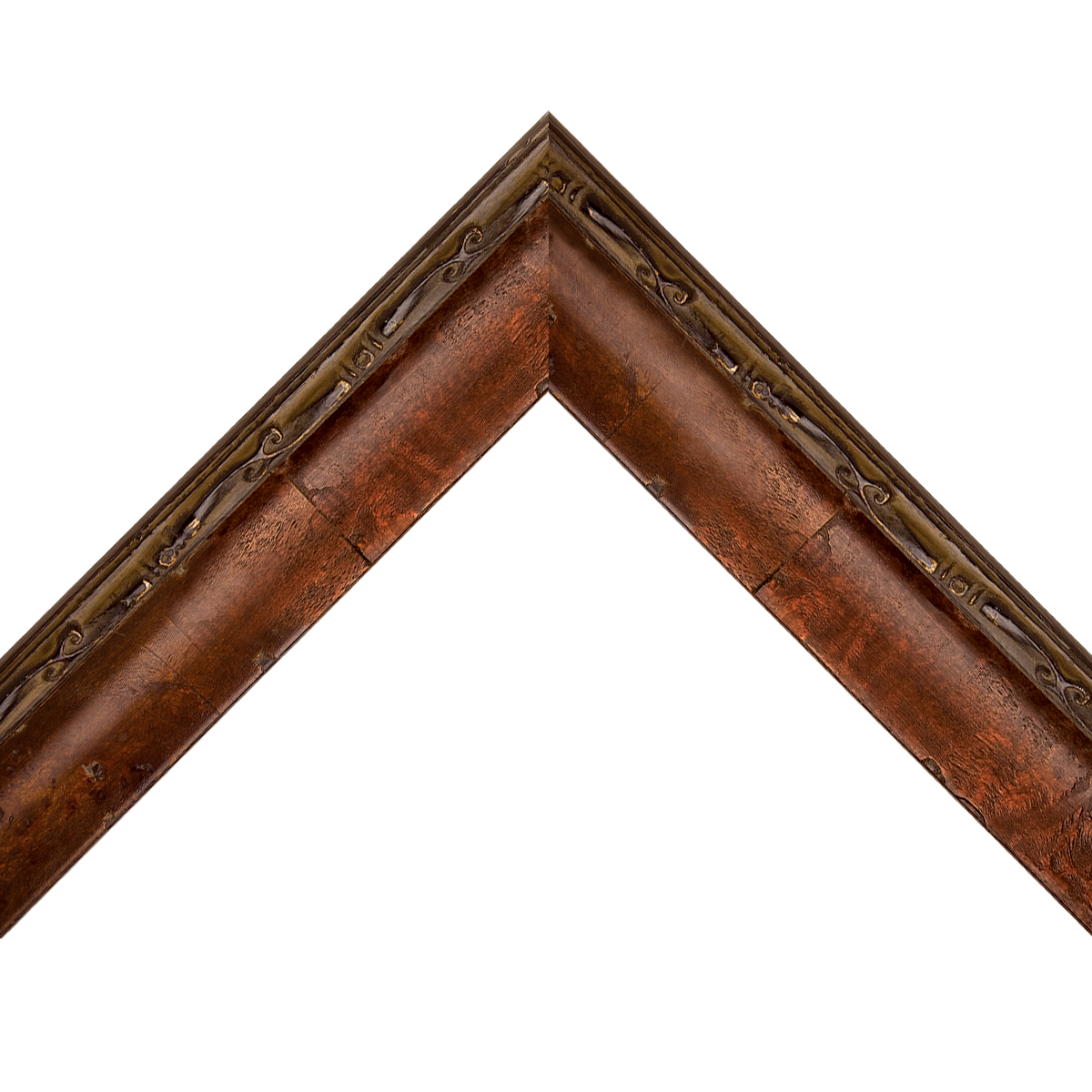
I wasn’t exactly sure, but I held it out as a possibility. If you’ve read my previous writing you know how important a strong locational identity is to my collecting motivations and framing choices. This frame would create the feeling as if this was actually framed on Lorwyn or Shadowmoor. It was rustic and had that handcrafted appearance, new and yet it felt quite old. If I could make it fit with a frame liner, it would be perfect!
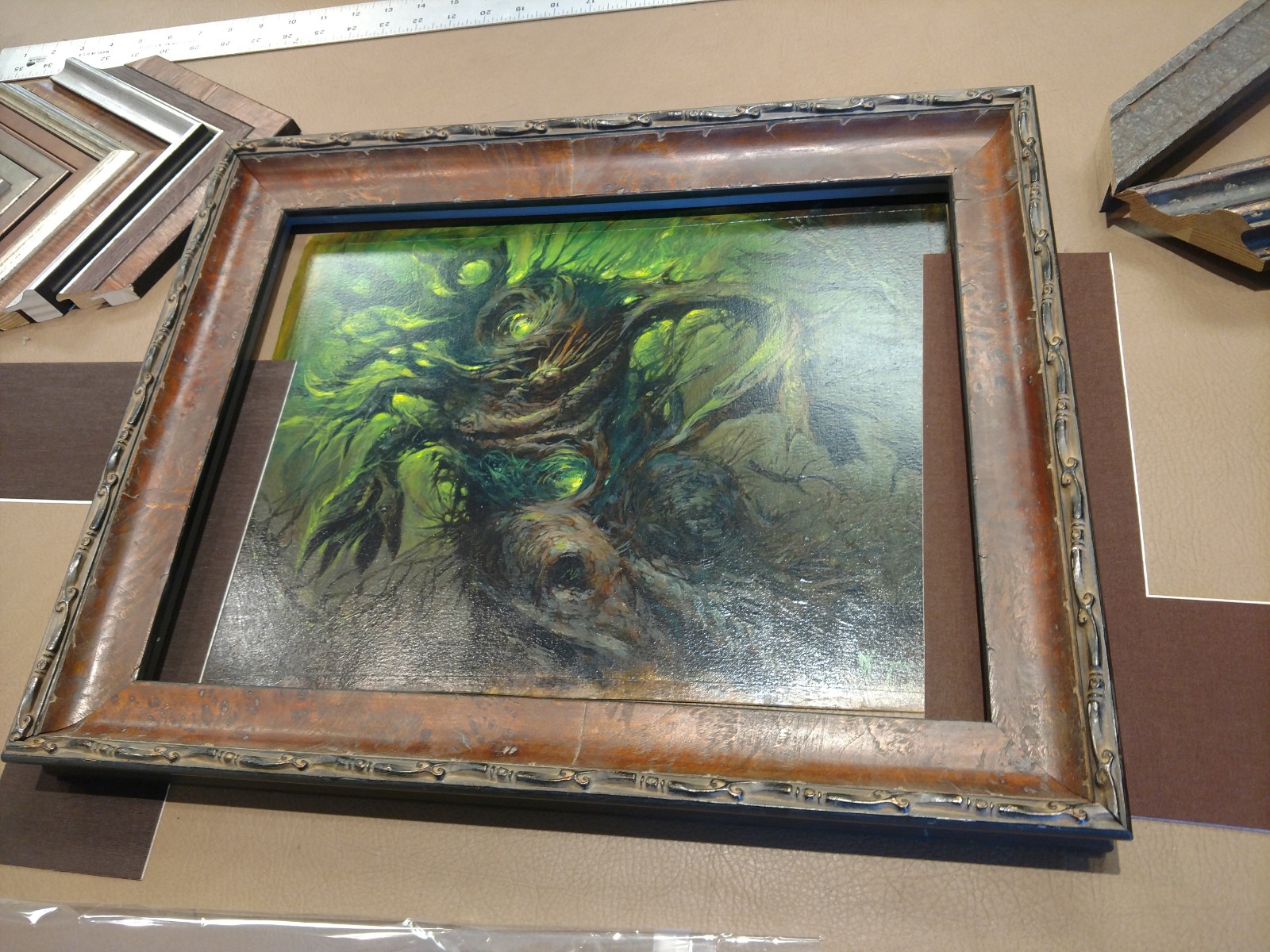
It needed something else to fill in the rest of the frame, but a matte just didn’t have the right look and feel. We went to inner frames and liners next; I’ve had considerable success with adding that extra “something” using a piece of thin moulding to set off the work. You’ve heard me brag about my framer before, and once again, on the first shot, she found the perfect fit.
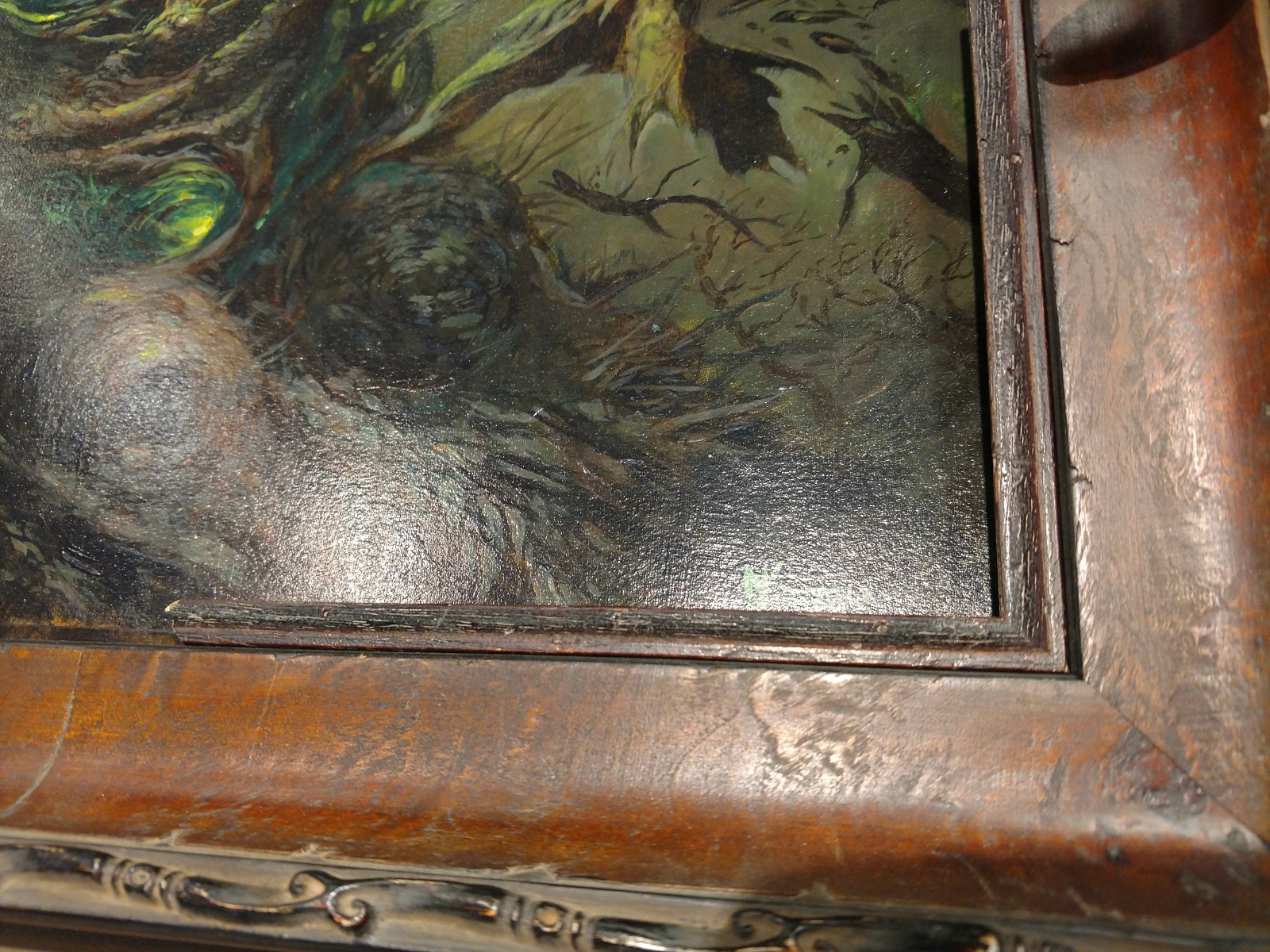
The exterior moulding is known as Magellan, a cherry distressed and burl veneer scoop outer frame with a Sevilla Brown pine/spruce interior liner. Foxfire Oak was complete. A bit cannibalistic perhaps, framing a treefolk in wood, but it now appeared as if it was framed on its home plane. It wouldn’t look a bit out of place hung over the mantle of a storybook Kithkin home, telling the tale, just as I have, of the time when the forest was on fire.
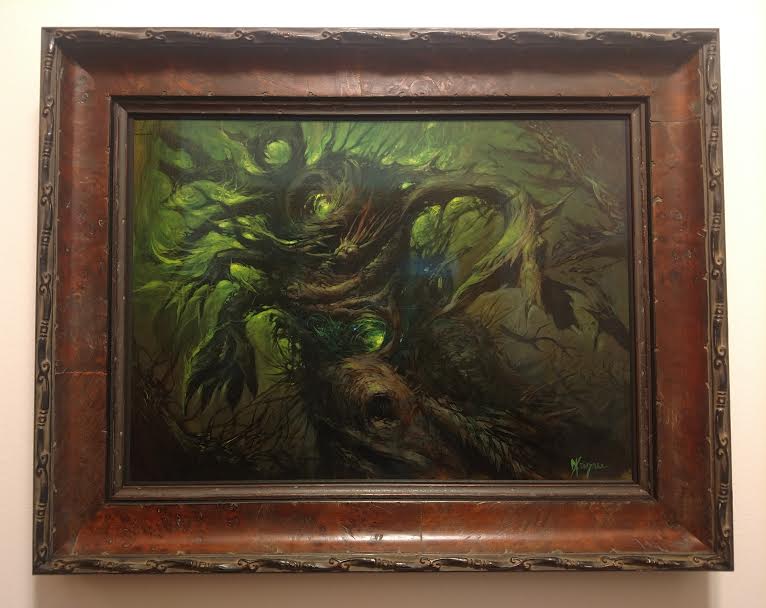
Build Your Collection
Dave Kendall’s originals are available through the website Berserker Art run by agent Andy Brown. They are both based in the UK, but all of his traditional Magic original paintings and sketches, as well as a handful of work from other projects, and are updated and housed on this site.
Dave currently has 36 incredible original Magic sketches available on the website, in addition to 24 traditional Magic paintings still available for collecting. This is one of the largest groupings of original Magic art still left on the market directly from the artist. His work runs the gamut from sofa-friendly to dungeon-gruesome; take a look at a small sampling of the incredible work still available, and click through to see all of his available paintings and sketches. There is something for everyone.
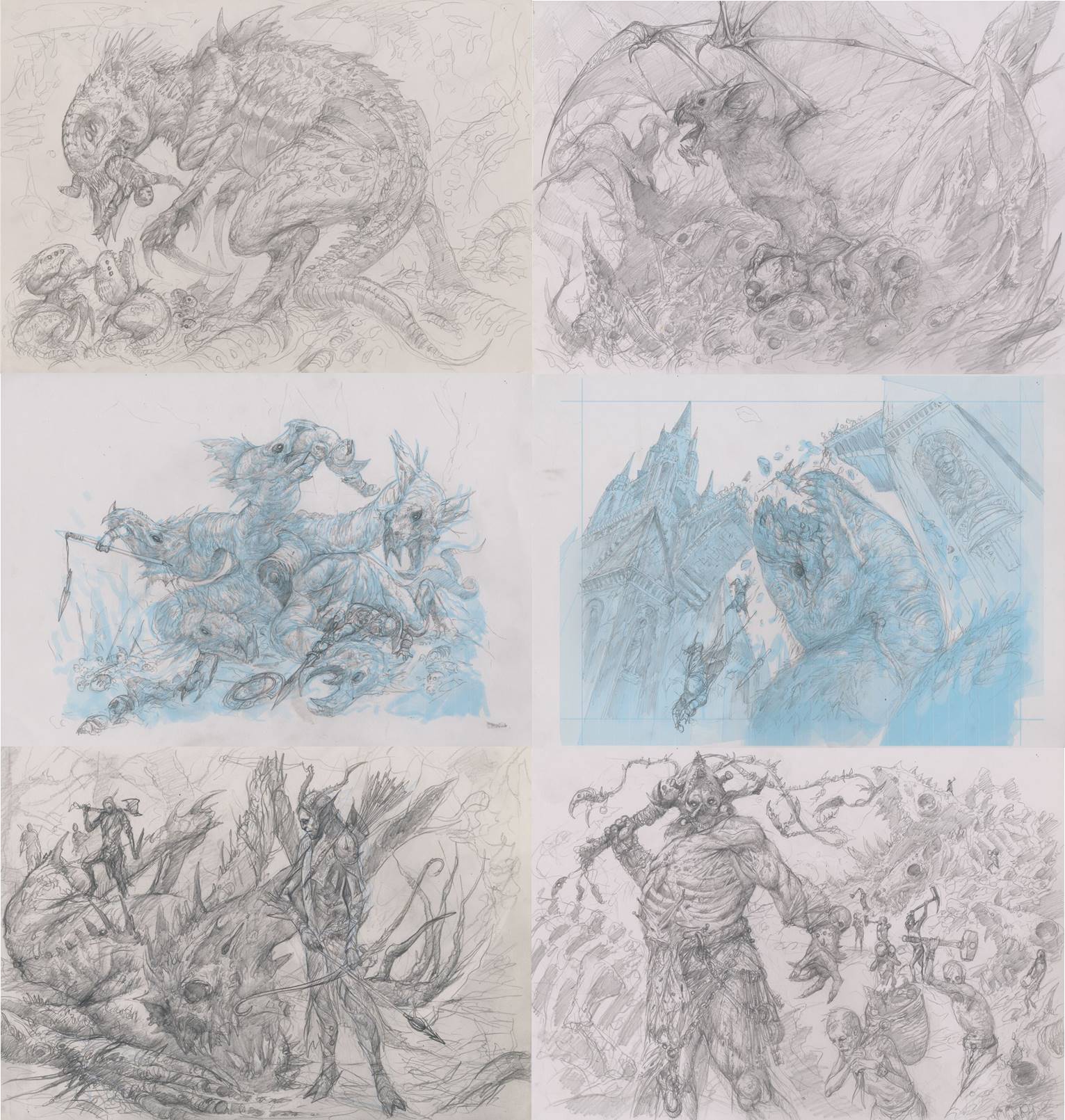
Dave Kendall Original Sketches, all 12” x 16.5” with prices ranging from $120-$300
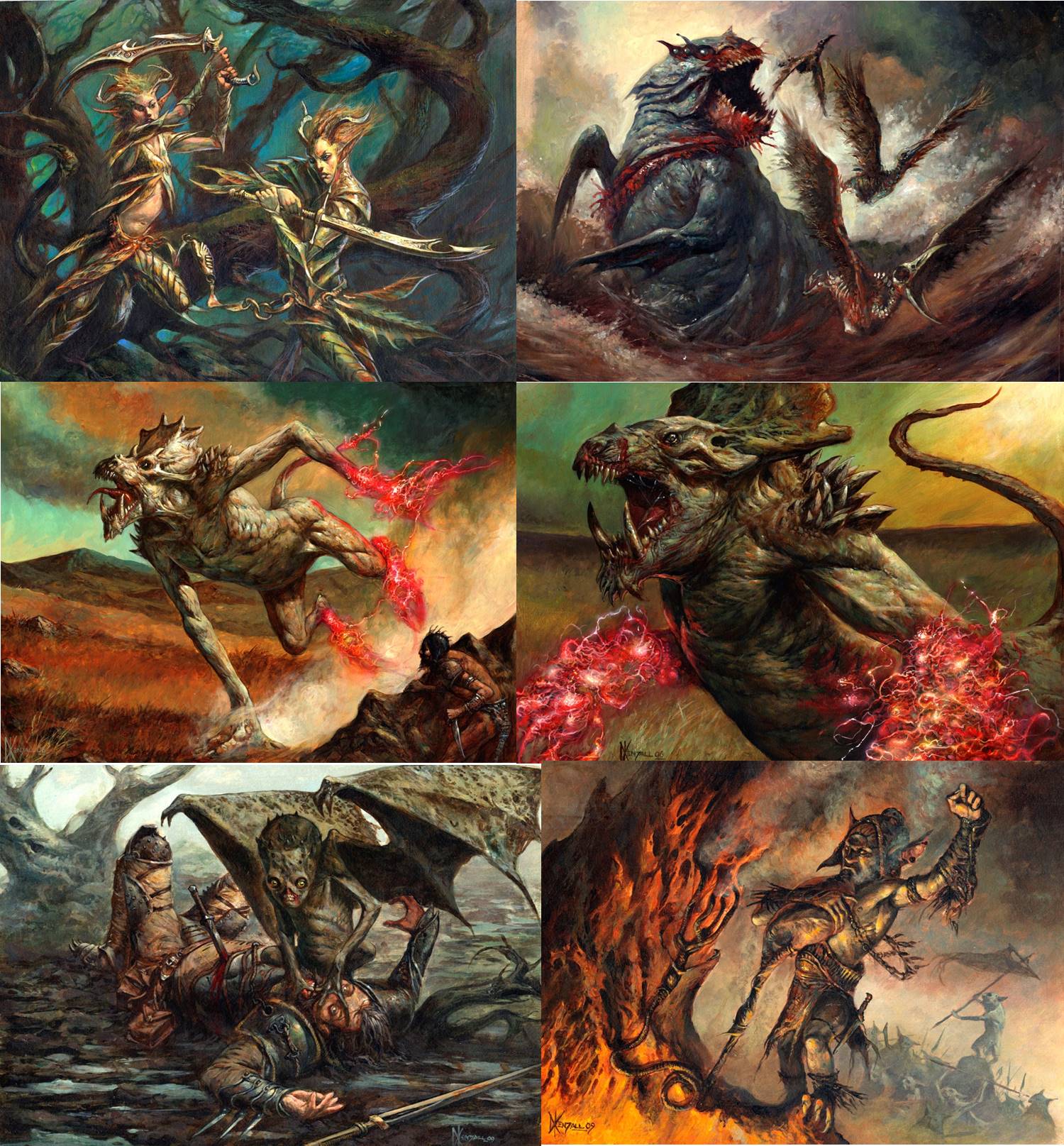
Dave Kendall Original Paintings, all 12” x 16.5” with prices ranging from $650-$1300
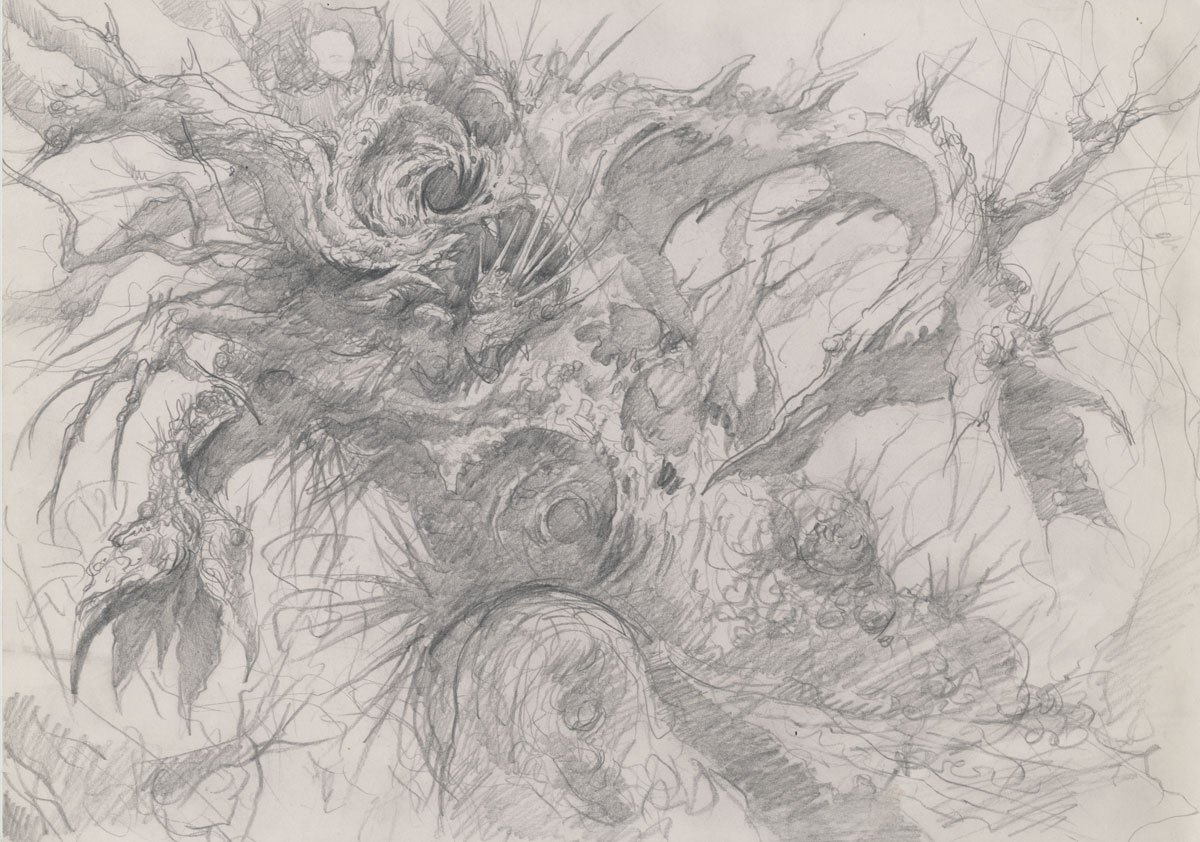
Foxfire Oak by Dave Kendall, original sketch, 12” x 16.5”
If you enjoyed this article, perhaps you’d like to own the other piece of this work.
Dave has an absolutely fabulous variety of subjects in his very signature style, and they are even more incredible up close and in person. You will not be disappointed owning one of his original paintings or sketches, of that I assure you.
Wrapping Up
I hope you all enjoyed this deep dive into one of my very favorite pieces of Magic art, and I thoroughly enjoy exploring these lost stories stored within the art of this great game. A Vorthos is a Magic player right alongside Johnny/Jenny, Timmy/Tammy, Melvin/Melanie and Spikes. We care about the craft of the creative, and the flavor that is sown into the cards, sets, and fantastic worlds Magic visits. The way the name, art, and flavor text, come together in this one card is what a Vorthos player yearns for in Magic, and it’s representation of Shadowmoor is the interpretive icing on the cake. I hope I’ve been able to illuminate some fun things that may have gotten lost over the last ten years this card existed.
We are sleigh-riding towards the end of the year, and I have two more Mirror Gallery articles before we ring in 2019. Next time we will take a look at another incredible piece of art by a Magic artist (and living master), and we will wrap us this year with a reflection on where this column started, where it’s going, and exactly how it all happened. Stay tuned, same Mirror Gallery time and same Mirror Gallery place as always.
Remember, to see original #mtgart and other #vorthos related things, follow me on Twitter. Feel free to ask questions or retweet to continue the conversation. Thanks and see you next time!
Donny Caltrider has been playing Magic since 2002 and collecting original Magic art since 2017. He has an M.A. in Museum Studies from Johns Hopkins University and enjoys telling stories about art, objects, and the intersection of fantasy with real-life. You can find him on Twitter talking about #mtgart, museums, and other #vorthos related goodness. Follow along and continue the conversation!


